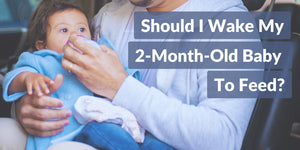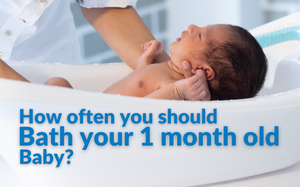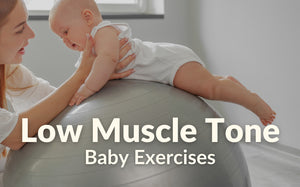Many people believe that "weaning" refers to the process of discontinuing breastfeeding and beginning solid foods for the baby. This is, however, not the case. Weaning from breastfeeding should be continued while gradually introducing food into your baby's diet. It would be more accurate to call the process "complementary feeding."
Is my baby ready for solid foods?
Until the age of six months, your breastmilk is enough for your baby. Babies are ready to move from weaning from breastfeeding to food when:- They show an interest in the food you are eating.
- Can sit comfortably without support.
- Reach out to grab objects.
Food To Introduce When Weaning Your Baby
Each meal you prepare for your baby should include a variety of nutrients from each of the food groups, like carbohydrates, proteins, fats, vitamins, and minerals. Here’s a baby-led weaning food list you should start with:- Mashed ripe bananas.
- Porridge made with staple grains like whole wheat flour, broken wheat, rice, rawa (semolina), or ragi.
- You can also give your baby boiled or cooked and mashed vegetables, such as pumpkin, tomatoes, carrots, peas, beetroot, potatoes, sweet potatoes, or seasonal fruits.
- Foods like khichdi, sheera, poha, dhokla, upma, and idli should be slowly introduced.
- If you eat non-vegetarian food at home, your baby can have that as well.
Foods To Avoid When Weaning Your Baby
Knowing which foods should not be offered can be of great help, as not all foods can be given to babies. Here’s a baby-led weaning food list you should avoid:- Fried foods
- Any food item that a family member is allergic to
- Foods with excessive salt, sugar, or artificial sweeteners
- Foods that contain monosodium glutamate (Ajinomoto)
- Honey
- Very spicy foods
- Foods that can cause choking include nuts, small candies, raisins, grapes, and popcorn
- Sugary drinks, tea, and coffee
How Should You Prepare These Foods?
One of the most frequent questions that pops up in our mind is how to prepare weaning food. Babies need nutrient-rich foods to meet the demands of their growing bodies.
One way to pack these nutrients into food is by preparing meals with a smooth, thick consistency and adding some oil, butter, ghee, and sugar or jaggery to make the food energy-dense. You should adjust the consistency of food as your baby adapts.
Between the ages of six to eight months, you can start giving foods with a thick porridge-like consistency.
When your baby is about 9 or 10 months old, you can progress to foods with a granular or lumpy texture and add new flavours. These new experiences will prepare your child to be open to new foods. You can also start with finger foods or foods that they can eat with their hands.
At about 12 months, your baby can start eating foods that you prepare for your family, but without the spices and extra salt.
How Should You Introduce These Foods?
In order to successfully transition from weaning from breastfeeding to food, one must start small and slowly increase the amount and frequency.Initially, feed your baby about two to three tablespoons of food about 2-3 times a day along with regular breastfeeding, and gradually increase the amount to about half of a 250 mL cup, four or more times a day, as your baby grows older.
Make sure to give your baby a complete meal with all the food groups in their diet.
- When you start weaning from breastfeeding to food, pick a time when you and your baby are relaxed.
- Make sure your baby is sitting comfortably in a high chair or on your lap.
- Use a small spoon for feeding and talk to your baby to make her feel at ease.
- Introduce only one new food item at a time and wait a few days to check if your baby is tolerating it well.
- If your baby appears uninterested in eating, try presenting new and different preparations.
- Do not force-feed your baby; instead, gently encourage them to eat.
- Give your baby water in an ordinary glass, and she will soon master drinking water from one.
Frequently Asked Questions
Is It Good To Use A Bottle to Feed Baby?
Babies need to learn the difference between solid and liquid food. If your baby uses a bottle, they will not learn how to chew and swallow the food, pause between morsels, and stop eating when they feel full, all of which are essential experiences for your baby to learn good eating habits. Therefore, it is not advisable to use a bottle to feed the baby cereal or baby food.
What Should You Do If Your Baby Has Diarrhoea?
Generally, once your baby starts eating solid foods, their stools should get firmer with a stronger odour. However, if your baby has loose stools, it could mean that your baby’s digestive system is slightly irritated. Discontinue the new food item for some time.
If your baby exhibits allergy symptoms such as vomiting, rashes, or swelling of the face in addition to diarrhoea, you should discontinue that food item but continue weaning from breastfeeding.
Always consult your doctor if the symptoms continue or worsen.
References:
UCSF Benioff Children’s Hospital. FAQ: Introducing your baby to solid foods [2020]













LEAVE A COMMENT